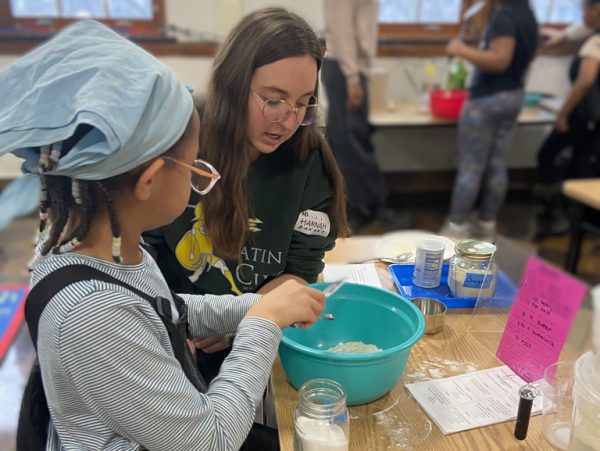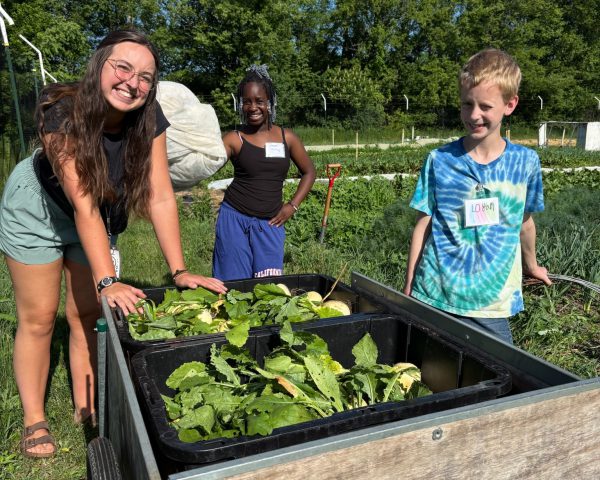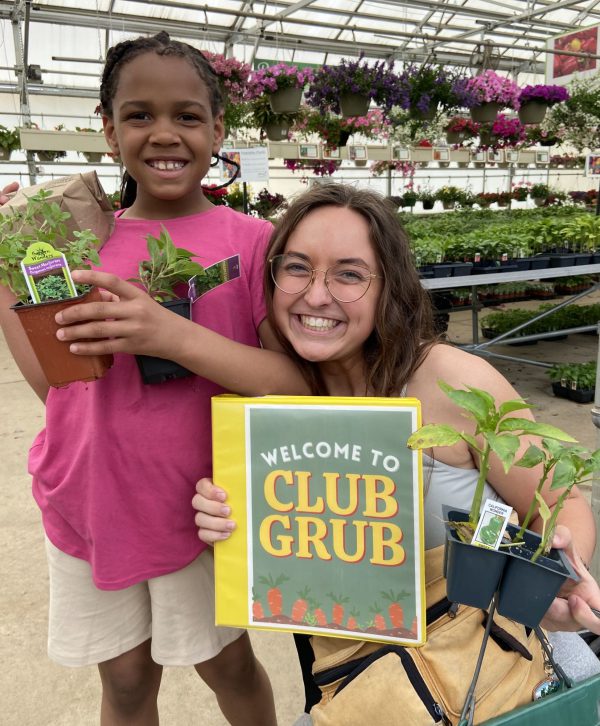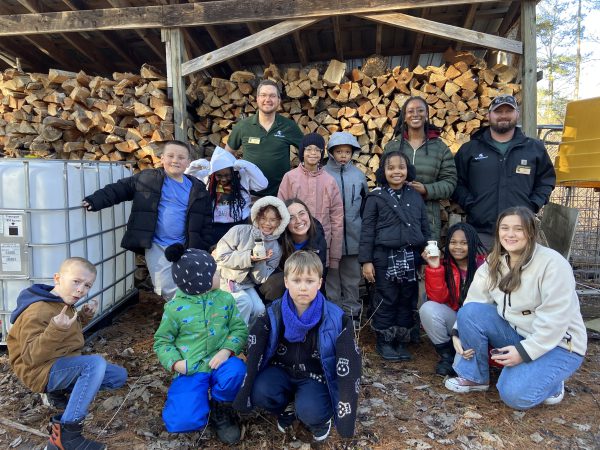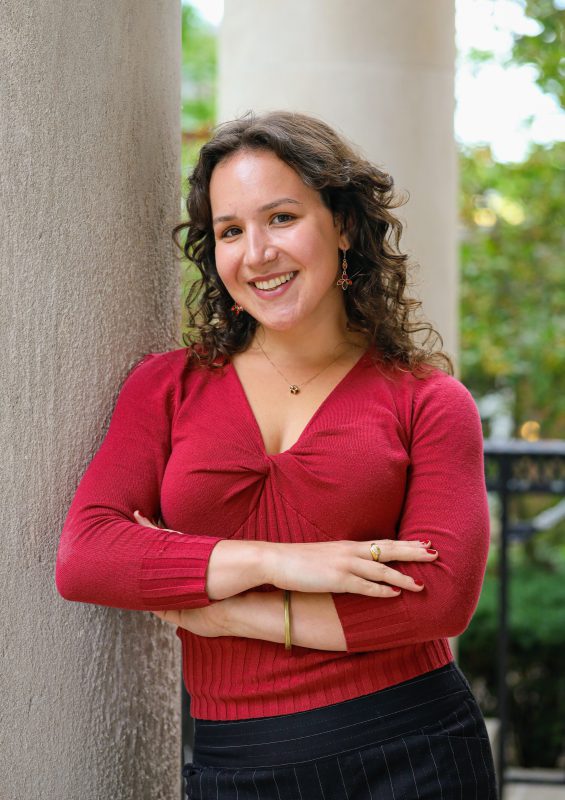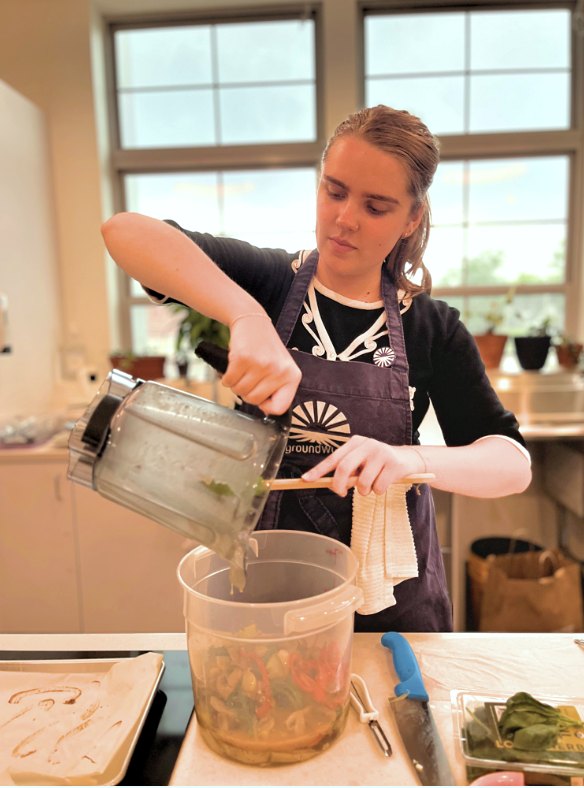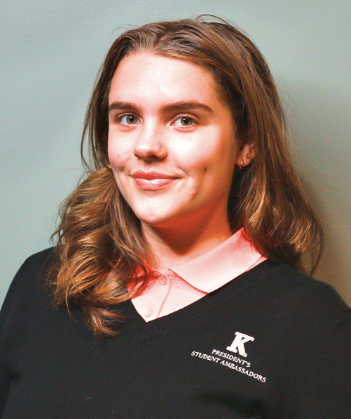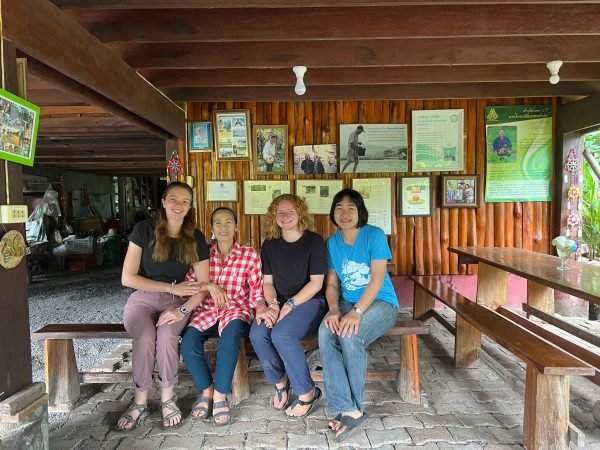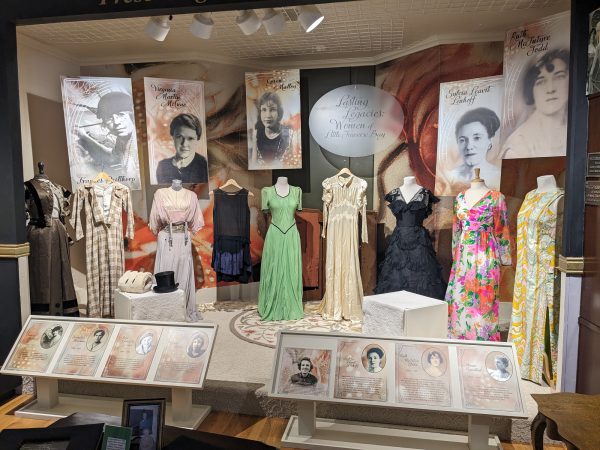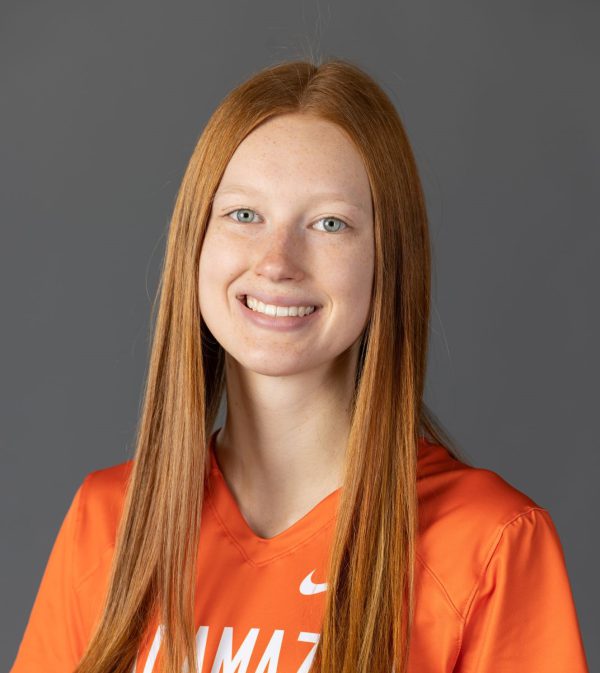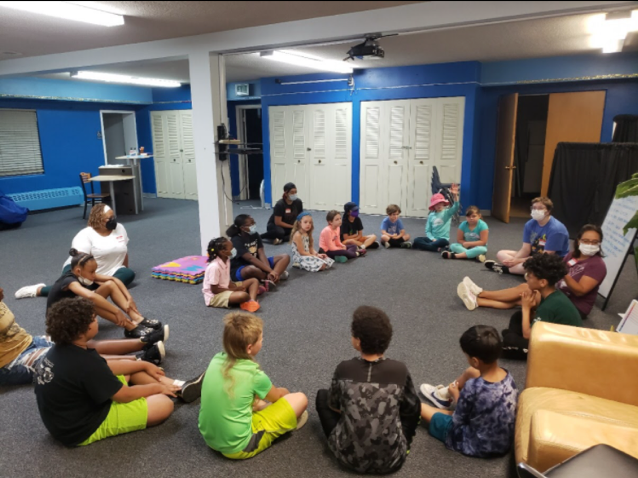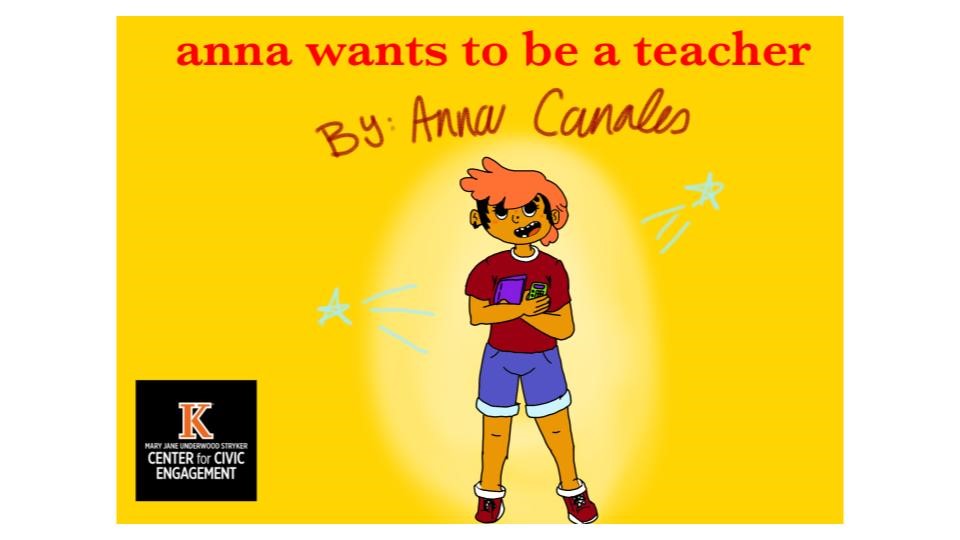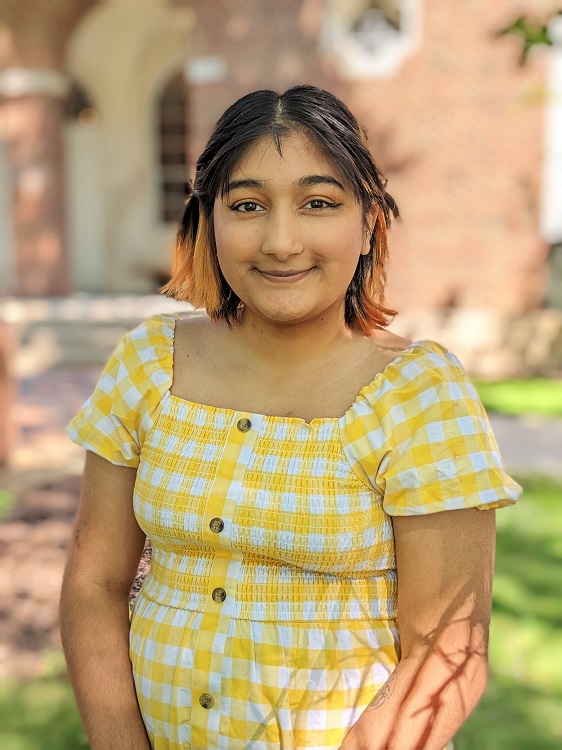For Gloria Jackson ’26, the lessons she’s learned in Kalamazoo neighborhoods have strengthened the ones she’s encountered in the classroom and vice versa. With two Community Building Internships (CBIs) through the Center for Civic Engagement (CCE), Jackson has deepened her understanding of what it means to be part of a community while discovering new sides of the city she might not otherwise have seen.
“I think CBIs are an accessible and meaningful way to get connected with the greater Kalamazoo community,” Jackson said. “As a student, it’s easy to think we need to be on campus, but through CBIs, there are endless opportunities to engage with community members, learn about what’s important to them and understand the issues that affect our shared community.”
Jackson’s first CBI, in summer 2024, was with the Eastside Arts and Science Experiential Learning program, also known as EASEL, which focuses on science, technology, engineering, art and math—also known as STEAM—for children with hands-on projects and field trips. EASEL is an initiative of Eastside Youth Strong, a nonprofit organization in Kalamazoo that provides programs and support for youth in the Eastside neighborhood. The organization aims to help children succeed academically and socially by offering after-school and summer programs focused on building relationships, leadership and life skills.
“It’s a really beautiful program,” Jackson said. “It’s grassroots—neighbors helping neighbors, who see inequalities within their own community and using their own resources to fill those gaps. I thought that was such a beautiful sentiment and I wanted to see how I could put my hope somewhere beyond myself.”

At EASEL, Jackson worked primarily with kindergartners through eighth-grade students, leading science and math-based experiments and joining them on educational field trips.
“We did so many cool hands-on activities,” she said. “We learned about ecosystems and the water cycle, and one of the teachers who loved birding took us to a nature preserve to identify birds. It was so rewarding to see how curious the kids were and how much they already knew about their own neighborhood environment.”
The experience provided a window into inequities in Kalamazoo outside of the Northside neighborhood, where Jackson previously volunteered with the CCE’s Community Advocates for Parents and Students (CAPS) program. This grassroots community organization provides quality academic support to Kalamazoo Public Schools students who live at Interfaith Homes. She is also currently one of two CAPS Civic Engagement Scholar.
“The Eastside community is similar in many ways to Northside, but also very different in terms of access to resources,” she said. “I wanted to understand those differences firsthand. Public funding sometimes fails to adequately support certain communities, and it’s important to recognize this while working with local organizations. These orgs exist to provide essential resources that might otherwise be unavailable to the community due to lack of funding.”
Last summer, Jackson returned for a second CBI, this time with Kalamazoo Parks and Recreation. The role brought new challenges while broadening her view of the community even further.
“My position was unique because I rotated between all six day camps across the city,” she said. “I filled in wherever support staff were needed—sometimes for field trips, sometimes when another staff member was out. Every day looked different.”
That unpredictability pushed Jackson out of her comfort zone, an experience she needed to have to grow as a young adult.
“I’ve realized I sometimes struggle when things don’t go as planned,” Jackson said. “But this internship taught me how to adapt. I never knew what site I’d be at or what kids I’d be working with, so I learned how to adjust my approach depending on the group. What worked at one site might not work at another. I learned to be flexible, patient and creative.”
Jackson said she especially enjoyed discovering what made each camp different.
“Kalamazoo Parks has programs at places like LaCrone Park on the Northside and Rockwell Park on the Eastside,” she said. “I was amazed by how diverse each site was and how the leadership reflected the youth they served.”
Seeing that representation, Jackson said, left a lasting impression.
“It was so powerful to see kids look up to people who looked like them,” she said. “You could see respect and pride. It made me realize how important representation is in community work.”
Working with children also helped Jackson discover a leadership style she hadn’t recognized in herself before.
“I wouldn’t have called myself a leader before this,” she said. “But when kids come to you for help or when they disagree, you have to respond thoughtfully. I learned to listen to both sides and help them find compromises. A good leader doesn’t silence others. They make space for everyone’s voice.”
Her favorite moment of the summer came during a camp talent show.
“It was such a fun time,” she said. “Some of the quieter students completely came out of their shells. They danced, acted and showed their art. It was beautiful to see them be themselves and shine in front of their peers.”
The experience also taught her the value of consistency.
“I found that being the adult who listens to and supports them makes a difference,” she said. “I wanted the kids to know they could always come to me and be taken seriously.”
Beyond youth work, Jackson’s internships helped her grow personally and professionally.
“The program ran from 9 to 5, but because I relied on public transportation, my days were much longer,” she said. “Sometimes I had to wake up earlier than I was used to and get home later than expected. It taught me discipline, punctuality and how to be prepared every morning.”
That daily experience, she added, also gave her perspective on community systems.
“I have so much more respect for people who rely on public transportation every day,” Jackson said. “Sometimes the buses were late or routes changed. It takes effort and resilience to navigate that. It really made me think about how infrastructure impacts people’s lives.”
Jackson, a psychology major, said her internships have directly shaped how she thinks about human development and behavior.
“They’ve absolutely helped me in the classroom,” she said. “I was able to draw from what I learned in psychology, especially social and developmental psychology. For example, I could see theories about how kids’ different environments—their microsystems—interact. One child might be scared to swim, while another can’t wait to jump in the pool. I learned to support both in ways that met them where they were.”
Jackson said her internships wouldn’t have been available to her had it not been for the CCE team, including Operations Manager Felicia Ford, Program Associate Oakley Gabriel, Director Sashae Mitchell and Associate Director Marquise Griffin.
“They’ve helped me reflect on my own positionality including who I am, why I’m entering these communities, and how to engage responsibly,” she said. “They’ve helped me understand civic engagement as an ongoing process.”
And now, as she looks ahead to life after K, Jackson says she isn’t sure exactly what her career will look like, but she knows where her heart is.
“My heart belongs to the community,” she added. “Wherever I end up, it’ll be something community-based or grassroots, where I can use what I’ve learned to help someone else. Learning through civic engagement is ongoing and I’m excited to keep growing.”

